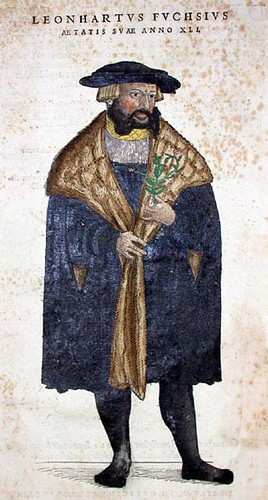Leonhart Fuchs: De historia stirpium
Basel: 1542
Sp Coll Hunterian L.1.13
Leonhart Fuchs' De historia stirpium commentarii insignes (or, Notable commentaries on the history of plants) was first published in 1542. A massive folio volume, this landmark work describes in Latin some 497 plants, and is illustrated by over 500 superb woodcuts based upon first-hand observation. One of the German fathers of Botany, Fuchs' aim was to reproduce each plant from life. Primarily a physician rather than a botanist, he emphasised the pharmacological aspects of plants, although their characteristics, habits, habitats and forms are also outlined. Arranged alphabetically by Greek nomenclature, no attempt was made at a natural system of classification: although the descriptions help to distinguish one species from another, Fuchs relied on the illustrations to be used as the main means for identifying the plants. Over 100 species are illustrated for the first time, many of the specimens probably coming from Fuchs' garden in Tübingen; over a thirty-five year period, he grew many of the plants featured in the work, including the exotics.
Our copy of this great herbal belonged to the politician and statesman Thomas Belasyse, Lord Fauconberg (1627-1700). At some early point in its history, someone - possibly Belasyse himself - has obviously read through the book with care; apparently a keen botanist, pressed between some of the pages are the remnants of small samples of the plants described. This owner evidently also had access to a copy of Gerard's famous English herbal: his manuscript annotations reveal careful cross references to the entries in both, often citing Gerard's English names.
For more images and background information on this book, see the Special Collections October 2002 book of the month article.
Previous page ; next page




